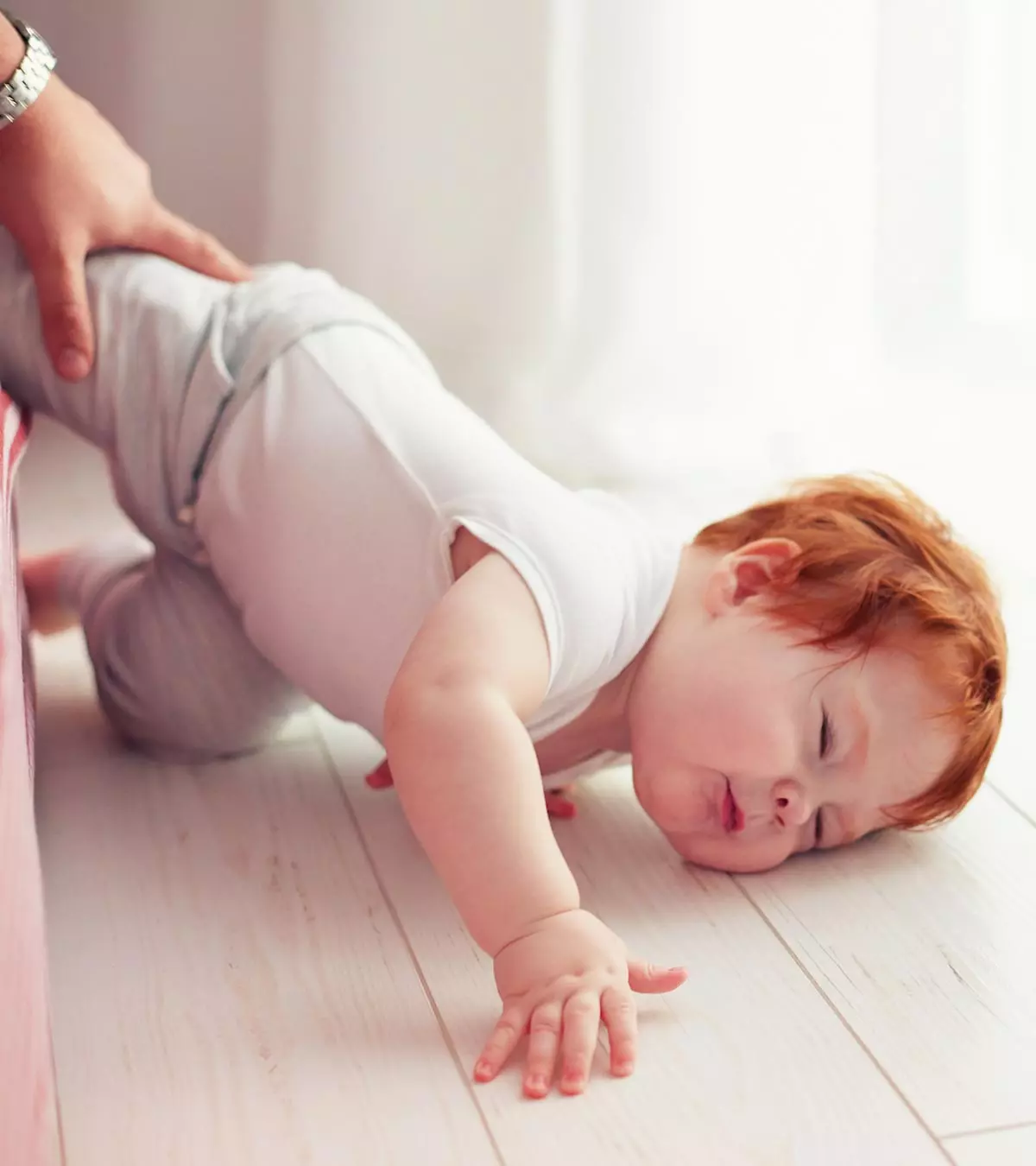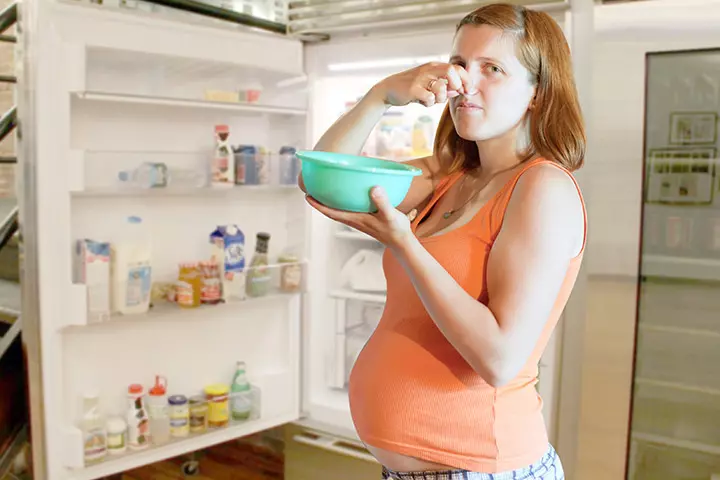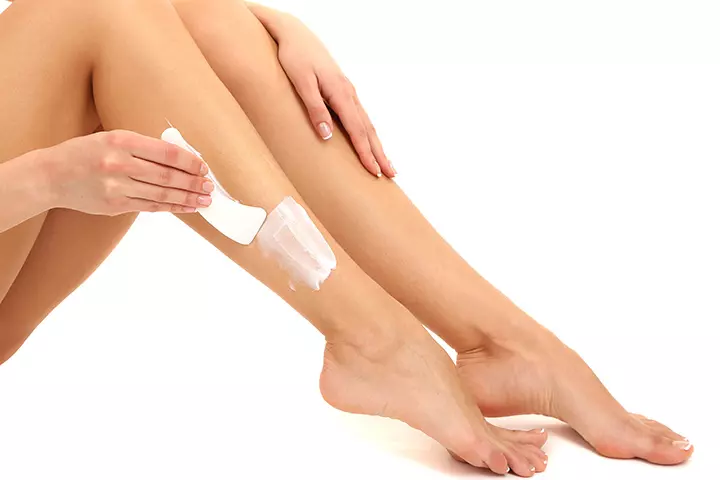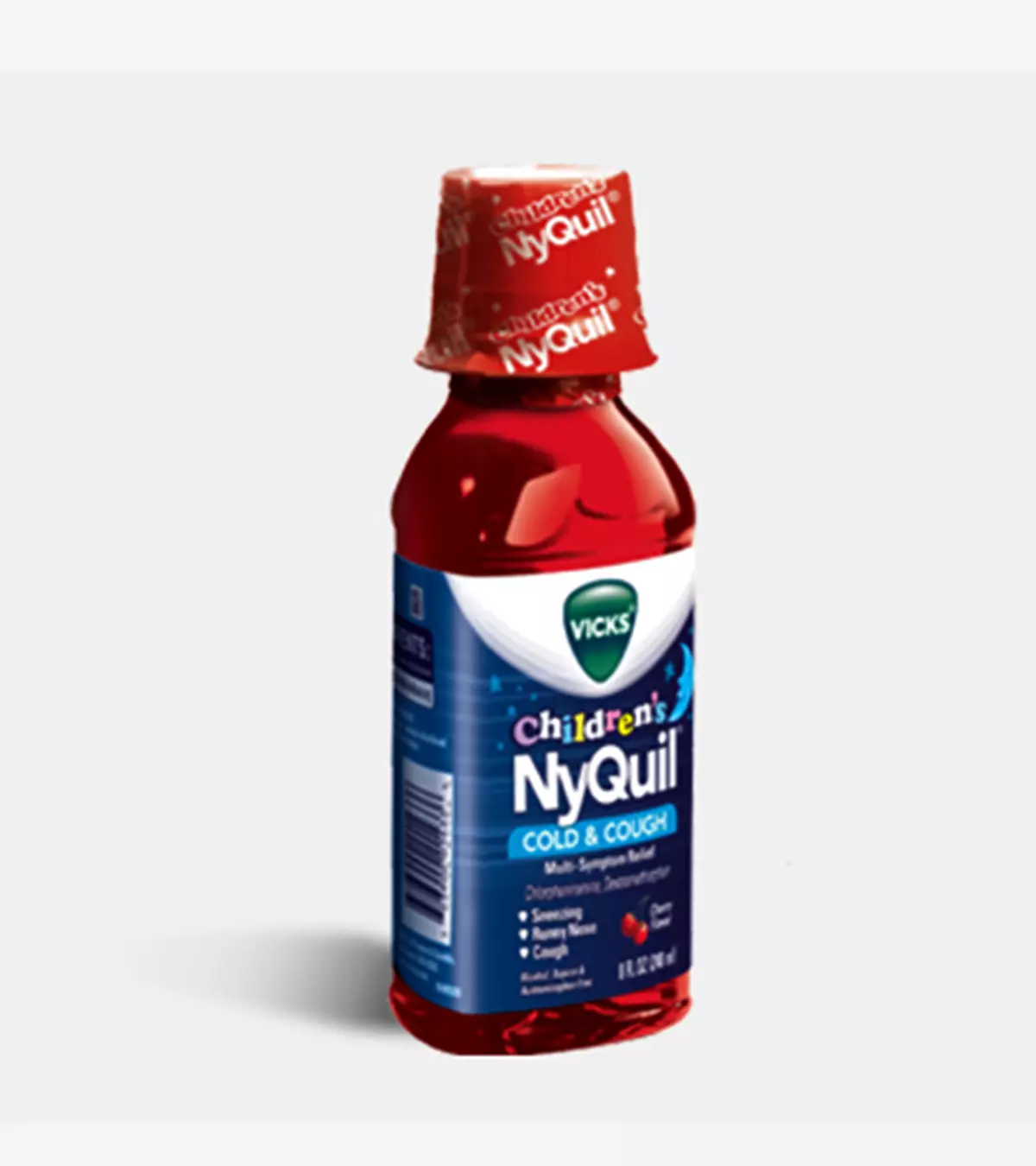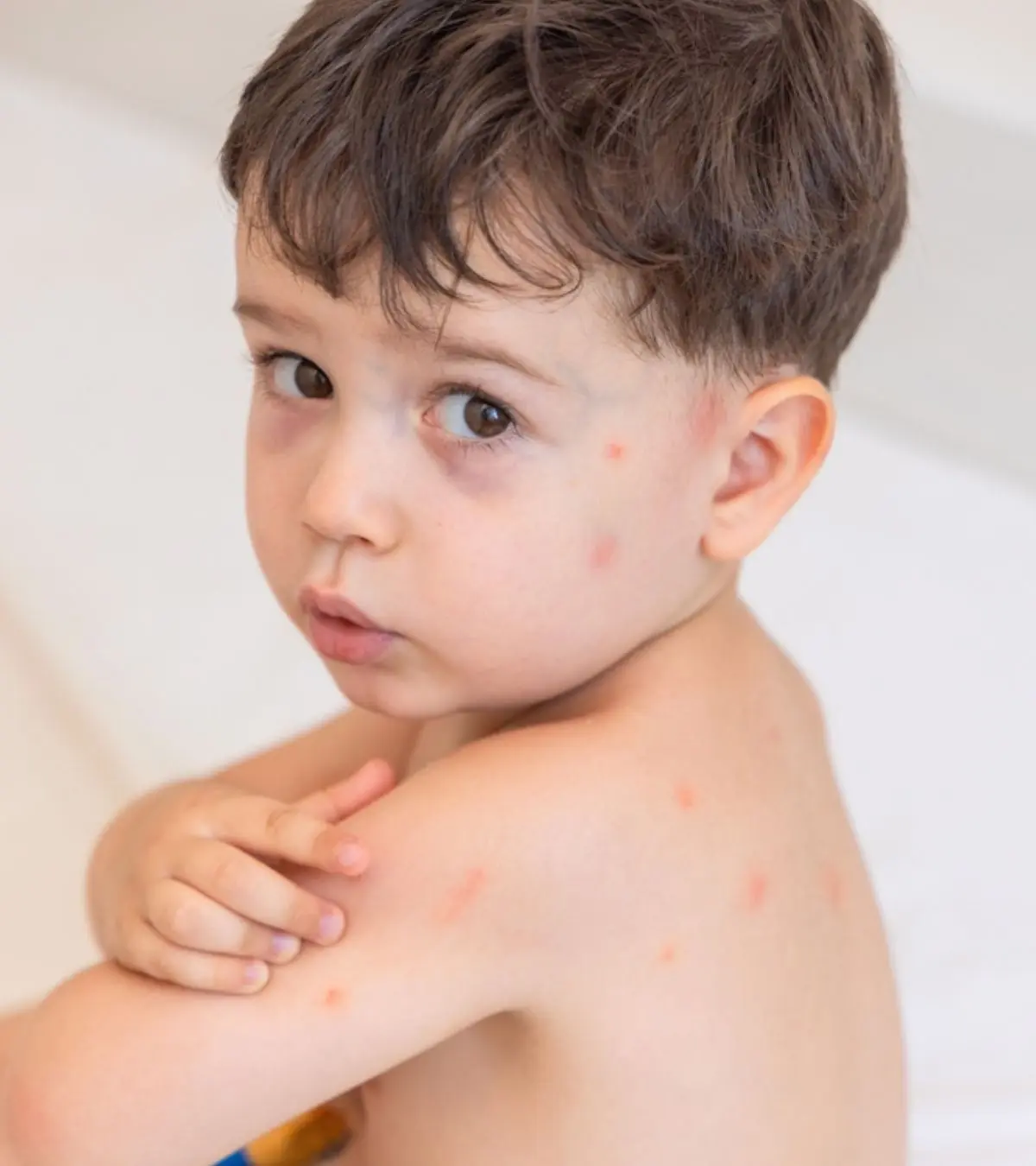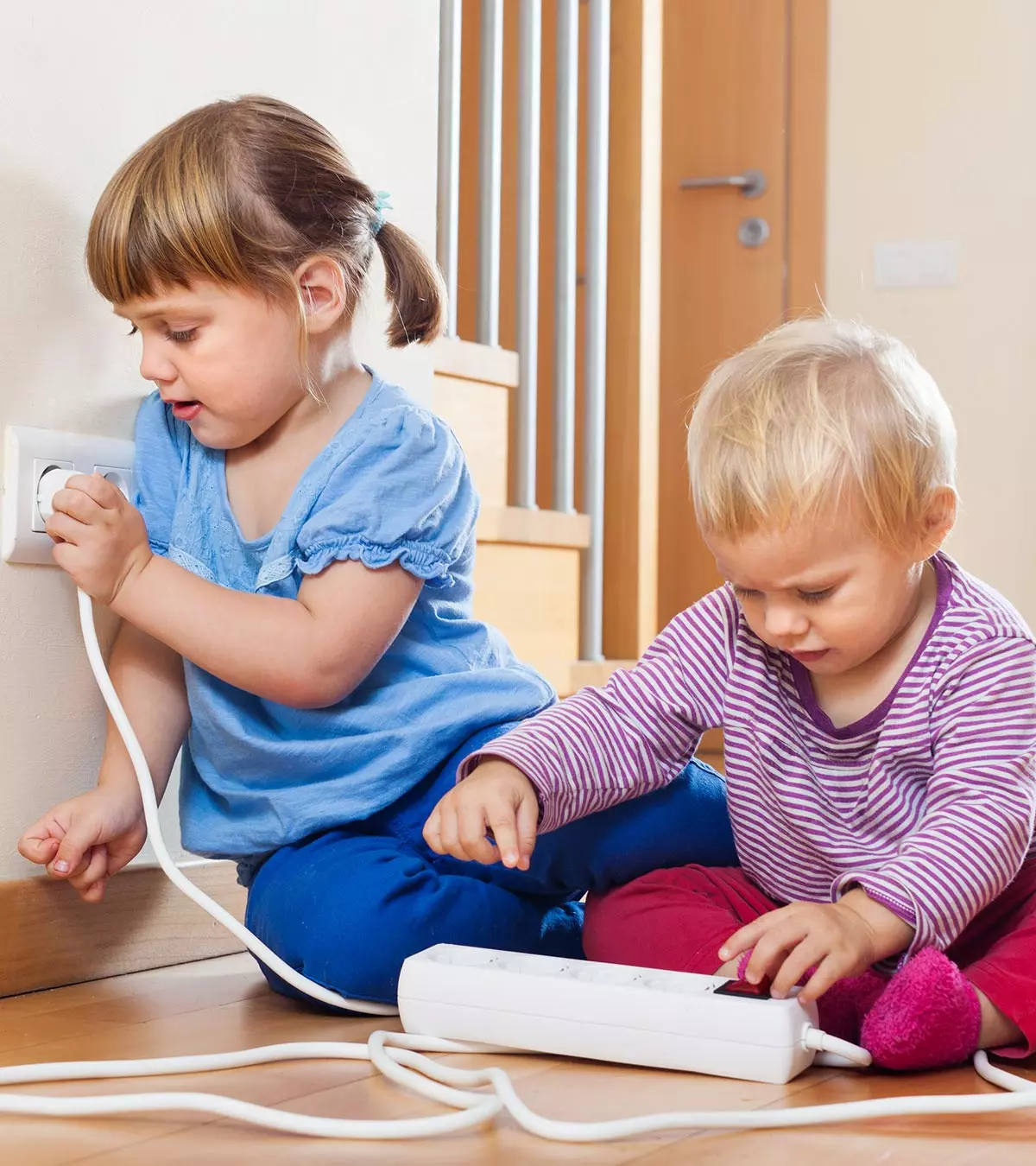
Image: Shutterstock
Whether at home or school, every parent is concerned about their child’s safety. However, checking up on your children may not always be possible. Therefore, it is vital to establish certain safety rules at home for kids to follow. Filled with love, warmth, and care, a home is where children discover and learn from the things they see, feel, and experience, allowing their minds and body to develop. However, children can get into danger or get hurt while playing, even at home. Establishing safety rules protects children from dangers and helps them understand their environment, empowering them to make safe choices as they grow. So, read on to know some home safety measures you should teach your children for their protection.
Key Pointers
- Home should be a safe space for children to explore and learn without facing significant risks of physical harm.
- To ensure child safety, it’s important to prevent exposure to electrical shocks and fires, toxic substances, falls or getting locked up, choking or suffocating, and drowning.
- Installing safety gates, lockable cupboards, electrical outlet covers, smoke detectors, and actively supervising children during activities and baths can help prevent most accidents.
- Additional safety measures include keeping small objects and firearms out of reach, avoiding clutter in sleeping areas, ensuring pet safety, storing necessary medications safely, and teaching children about emergency contacts.
10+ Essential Home Safety Rules For Children
Pediatrician and neonatologist Dr. Neema Shrestha says, “Children may have some accidents such as falling from the stairs or getting burns in the kitchen. These can be prevented by placing safety gates at the top of the stairs or putting hot liquids away from the child’s reach. Moreover, as children grow, these rules must be discussed with them time and again and new age-appropriate rules should be introduced regularly to keep the home a safe place.”
While a home is a safe place, by any standards, for children, it may also have hidden dangers. Your child might face some accidents like falling down, getting a bite from the family pet or a choking hazard and get injured in the process. We have compiled below top 10 safety rules at home for kids to help you keep them safe.
1. Do not leave your kids alone in the water
Kids love to splash in the water, whether it is a bathtub or a swimming pool. Though it is a fun time, chances of accidents like drowning can occur in water tubs or pools. According to the US Centers for Disease Control and Prevention (CDC), about 40% of drowning incidents in the US require hospitalization and further care. Drowning is also considered the second leading cause of unintentional injury in children between five to 14 years. Thus, it is vital to ensure that the water level is not more than the waistline of your kid when you place them in a tub or sink. Also, never leave your children without supervision. Give strict instructions to your kids that there must be no pushing while enjoying a dip in the pool.
 Quick tip
Quick tip2. Keep all cleaning products and detergents away from your kids
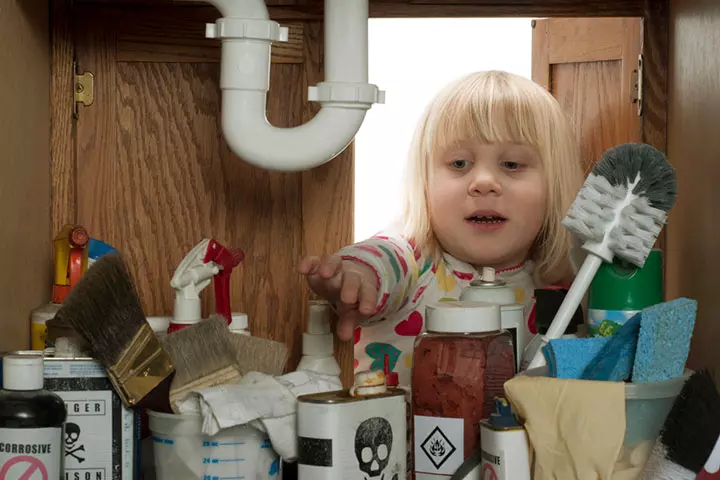
Image: IStock
All cleaning products have chemicals in them which make it highly poisonous if swallowed. You can make your home child-proof by getting on your hands and knees to make sure there are no cleaning products in and around the rooms where your kids can reach. Install doors to all your cabinets and keep them locked after every use. Never store these detergents in food containers or store them near kitchen shelves as your kids might mistake such things for food.
3. Keep the sleeping areas of your child uncovered
If you have an infant at home, make sure that you keep the crib as bare as possible because soft pillows, stuffed dolls or lots of bed covers might suffocate your baby accidentally. Wrap the mattress of the crib with a thin material blanket and tuck the bottom at the mattress end to make it look like a pocket. Make sure it reaches the baby’s chest. If the weather is cool, dress him in woolen clothes or use a slack. Avoid using crib bumpers.
4. Cover all the electrical outlets and wires at home
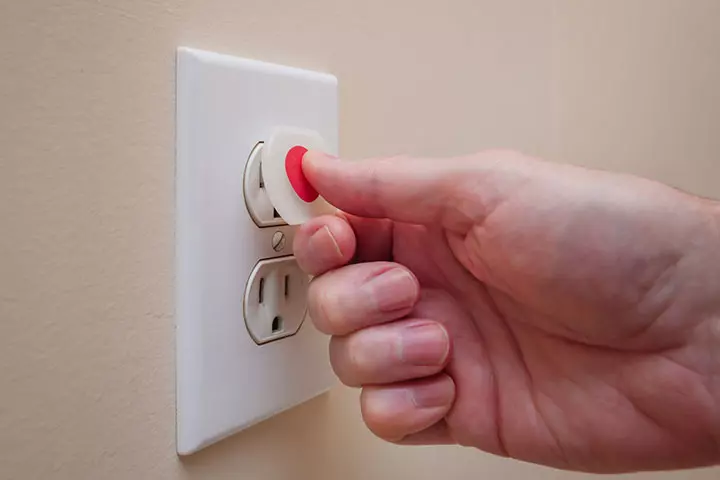
Image: Shutterstock
Make your home childproof from all kinds of electric shock by covering electrical sockets which you might not be using at the moment using plastic covers. Throw away the electrical gadgets or repair the electric cords which are damaged. Insulate the wires or fix them using casing to cover it. For comprehensive electrical safety for kids, promote awareness amongst children about the dangers of electric shock and tell them they must not touch any of these with wet hands.
A mother with two kids and a homeland security professional shares a concerning story about exercise equipment, like treadmills, being dangerous for children. She recalls an incident where her two curious girls ended up with severe injuries despite all the safety precautions at home and the treadmill key being kept out of their reach. She says, “There is no way I can understand how my daughter made it through the multi-step process of not only starting the treadmill but also increasing the speed considerably. But it happened, and my children have the scars to prove it. Based on this horrifying experience, I would recommend the following to parents who have a treadmill in their home: Keep all exercise equipment locked up and out of sight of your children. Hide any keys to the equipment in a separate room at a height that is at least twice what you think your tallest child can reach. Prevent electrical power to the equipment when not in use. Don’t underestimate the power of observation or speed of action from even the youngest members of your family (i).”
5. Lock away the firearms
Parents who own guns at home should prioritize firearm safety education to ensure safe handling and usage of firearms. If you have a firearm at home, it is your full responsibility to make sure it is stored after unloading the ammunition and locked in a safe place which cannot be accessed by your kids easily. Teach your kids about the dangers of using a gun in real life and also tell them the difference between the guns used by heroes in movies. You can make use of ‘advanced gun safe’ to store your gun safely.
6. Small sized items should be kept away from kids
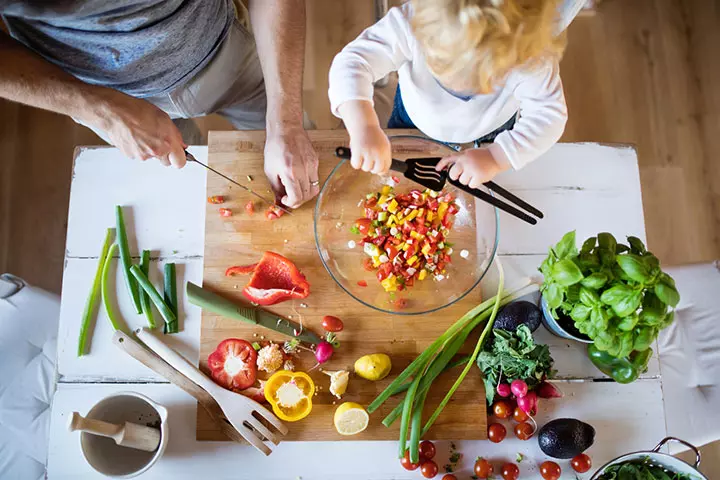
Image: IStock
Kids usually are in danger of choking, if they play with small toys or food items like whole almonds. Make sure you divide the food into bite sized portions to avoid choking. Be careful while giving your child grapes, candies, carrots, nuts and popcorn to eat, as it can also cause choking. Depending on the age of your child, never serve more than two to three pieces on their plate at a time. Make sure you keep buttons, coins, sharp objects, earrings, pins, or marbles out of reach from your kids as these can also trigger choking hazards.
 Point to consider
Point to consider7. Set a smoke alarm at home
Install a smoke alarm at home and check whether it is working fine every now and then. Teach your kids about the fire alarm, its beep sound, and have a fire escape plan ready when the alarm goes off. When there is a leakage of carbon monoxide gas which has no odor or color, it can be fatal to your kids. Your water heaters, furnaces, fire places, etc., can trigger this gas. Installing a detector would assure you that your home is safe.
8. Secure your perimeters
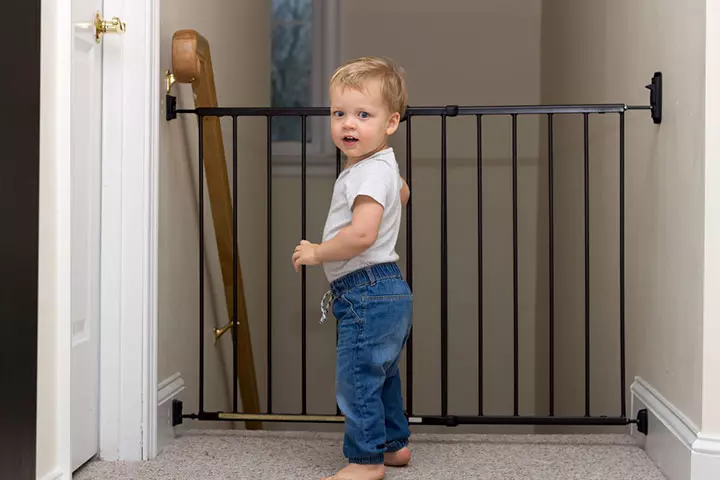
Image: IStock
To avoid any kind of accidental falls or injuries, it is essential to keep your windows and doors locked. Never leave your kid on the bed unattended as she might fall down. Do not allow your kids to play with the open windows or patio doors. Also make sure the stairways are blocked when you are not using it, to prevent kids from climbing it. It’s your responsibility to always maintain safety around the home for kids.
9. Safety while playing with a pet
Pets are very affectionate but some actions of your kids like pulling the tail or the ear can piss them off. Teach your kids to be gentle with the pet and refrain from playing rough games with the pet. Tell them not to go near the dog when he is having his food or try to take away a treat or bone from his mouth. Warn your child to stay away from the pet, which is growling or showing off his teeth as it would harm them.
10. Ensure gas safety
With the increased usage of gas appliances due to improved living standards, there has also been a significant increase in gas-leaking accidents in recent years (1). Therefore, it is essential to teach gas safety to kids. Get your children familiarized with the smell of gas leaks. Teach them to go outdoors and inform or call grown-ups right away. Tell them to use gas stoves only under any adult’s supervision. Warn them to stay away from gas appliances and not to play with pipeworks and gas knobs. As a parent, you must also ensure that no chemicals are placed near gas appliances and that the knobs and gas pipes are in good condition and are covered. Have them inspected every year (2). Also, store gas containers and gasoline in a place where your children can’t reach, and use gasoline outdoors with proper ventilation (3).
11. Better safe than sorry
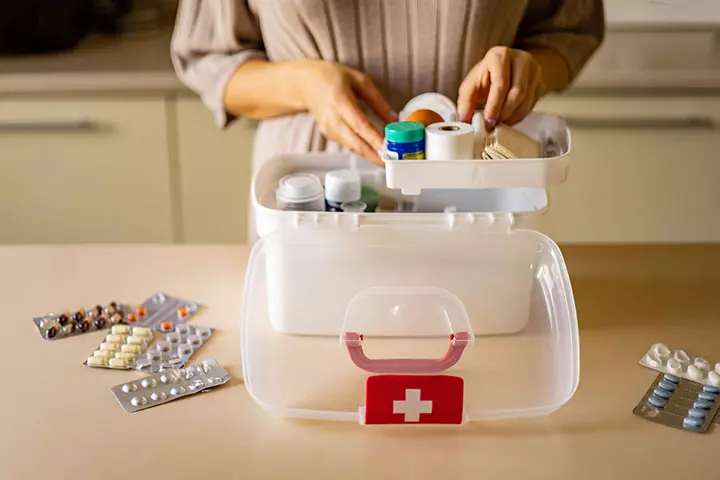
Image: IStock
To make sure that your kid is safe, learn first aid and keep a kit handy; it is also a good idea to learn CPR or cardiopulmonary resuscitation. Have the contact numbers of your friends, neighbors, pediatrician, poison control facility, etc., written on a big sheet on the wall, apart from storing it in the phone. If your child is old enough to know your home address, then teach him to dial such emergency numbers.
Frequently Asked Questions
1. How can children be taught to be safe when using the stairs?
Teach children to hold onto the handrail when using stairs, seek adult help if they need to carry something up or down the stairs, keep the stairs clear of toys, and avoid jumping or playing on the stairs (4).
2. What are the safety precautions that need to be taken when using the bathroom?
Bathroom safety measures may include ensuring that children below six years are not left unattended in the bathtub or the bathroom and using non-slip decals in the bathtub. Other measures include keeping razors, hair dryers, and curling irons out of children’s reach, storing cleaning products in locked cabinets, and teaching children not to run around on slippery bathroom floors (5).
3. How can children be taught to be safe around fires and open flames?
Teach children to stay at least three feet away from anything that may turn hot (stoves and heaters) and not to touch lighters or matches. It’s essential to keep lighters and matches out of their reach (6). Share fire safety tips for kids and talk to them as to why the prevention of fire accidents is important.
4. What safety rules should children follow when playing outside?
Supervision is essential for keeping children safe during outdoor activities. They should be instructed to stay within designated play areas, avoid talking to strangers, steer clear of overcrowded equipment, watch for parked cars, and wear appropriate protective gear when riding bikes or scooters. Also, teach them to use pedestrian crossings when crossing roads and to follow traffic rules.
Keeping children safe at home and teaching them to be safe are two important things parents cannot ignore. It is important to never leave your child alone near the water or keep detergents or other chemical substances within their reach to keep them safe. Ensure you guide your children with the above-mentioned general safety guidelines so they can learn the right ways and manage themselves. These safety rules for children can lower the chances of mishaps and accidents. If you are still concerned about your child’s safety or have any questions regarding the same, you should reach out to your child’s pediatrician.
Infographic: General Safety Precautions For Parents With Children At Home
Children are as much at risk of injuring themselves at home as they are outside. Hence, it is important for parents to ensure their safety. This infographic lists a few child safety precautions parents can follow at home. You may save it with other parents too!

Illustration: Momjunction Design Team
Illustration: Essential Safety Rules For Kids At Home
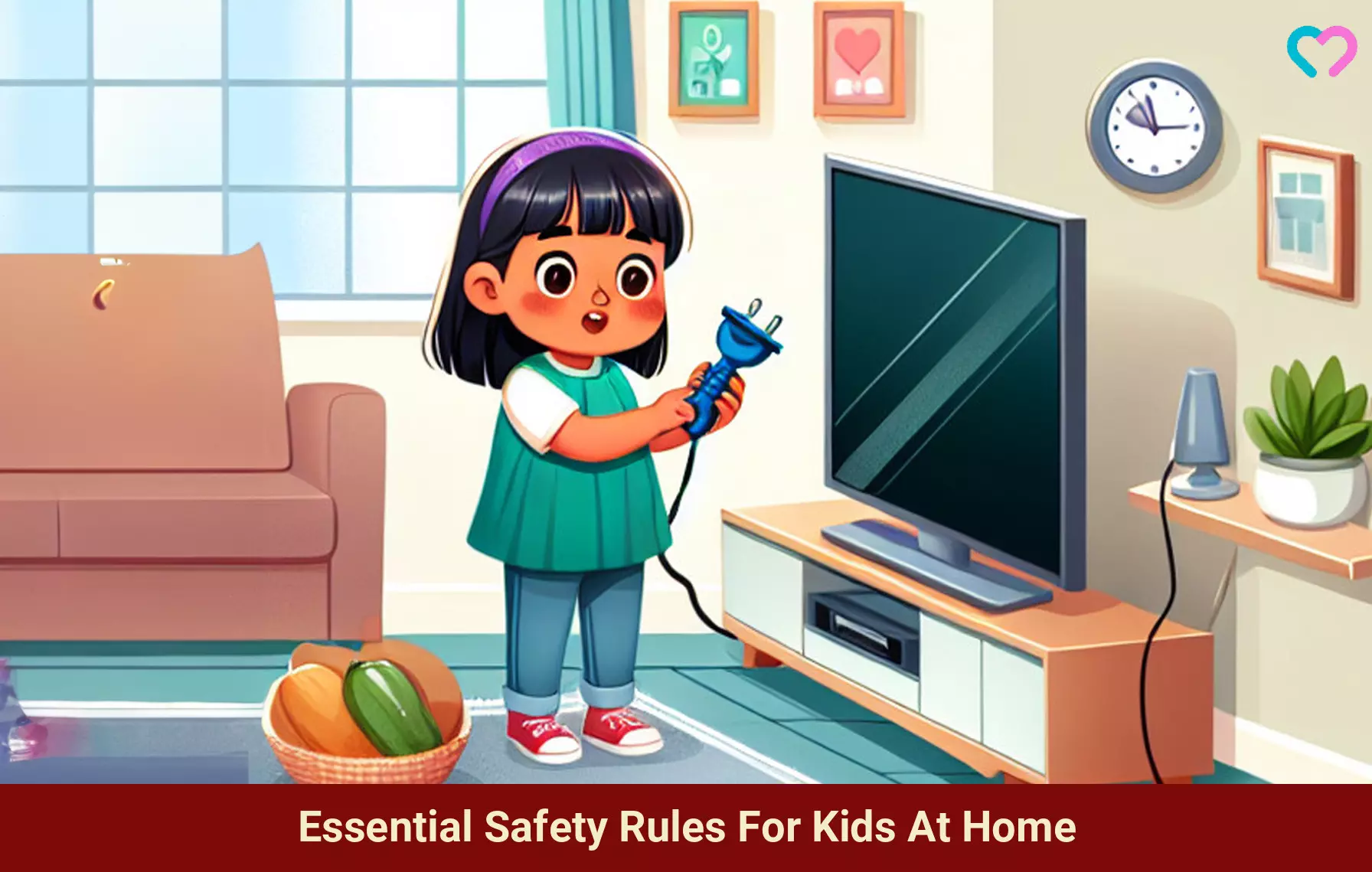
Image: Dalle E/MomJunction Design Team
Watch this engaging and educational video to acquire vital safety advice for children. Acquire essential strategies to ensure the well-being of your children in various scenarios.
Personal Experience: Source
MomJunction articles include first-hand experiences to provide you with better insights through real-life narratives. Here are the sources of personal accounts referenced in this article.
i. Treadmill Tragedy: How your quest to stay fit could hurt your kids.https://medium.com/homeland-security/treadmill-tragedy-how-your-quest-to-stay-fit-could-hurt-your-kids-1027e21ec45f
References
- Mengyu Xu et al.; (2021); Research on Safety Cut-off Technology of Gas Leakage Based on Gas Leak Alarm.
https://validate.perfdrive.com/9730847aceed30627ebd520e46ee70b2/?ssa=d355d765-3619-4025-9f10-1682074ed741&ssb=20278225461&ssc=https%3A%2F%2Fiopscience.iop.org%2Farticle%2F10.1088%2F1755-1315%2F859%2F1%2F012089%2Fpdf&ssi=76411869-cnvj-47e9-8ae1-1717df8b5e76&ssk=botmanager_support@radware.com&ssm=36040584662183305107175233383091&ssn=5a3fdb7872ff4f5a3631cf4bad33f5ebd51019ff00ec-db45-4597-af4234&sso=953e85b9-620e83f260edd82782901ca126835d4696e56b7f4a30a504&ssp=73474375051735226416173526918587374&ssq=72465990619978645110706199473700788867508&ssr=NDkuMjQ5LjguMTMw&sst=Screaming%20Frog%20SEO%20Spider/21.3&ssu=&ssv=&ssw=&ssx=eyJfX3V6bWYiOiI3ZjYwMDBiMzkwZWFkNi05NmUyLTRjZGEtOWM4MS01NDAxOGU0MjdkNGQxNzM1MjA2MTk5Njk4MC1mZDNkMTYwMzg4YmY3YmJiMTAiLCJ1em14IjoiN2Y5MDAwOWU1YmE2MjAtMzhkYS00ODFhLTkxNTktZWQ0MGQyNGNmYjA0MS0xNzM1MjA2MTk5Njk4MC1kODRhYjdhYTJjMjMyNzZhMTAiLCJyZCI6ImlvcC5vcmcifQ== - Natural Gas Safety Tips.
https://fremontne.gov/598/Natural-Gas-Safety-Tips - Gasoline Safety.
https://www.mass.gov/info-details/gasoline-safety - Stair Safety.
https://www.childinjurypreventionalliance.org/stair-safety - Bathroom safety – children.
https://medlineplus.gov/ency/patientinstructions/000154.htm - Keeping Kids Safe from Fire.
https://www.portlandoregon.gov/fire/article/7025 - Child safety at home.
https://raisingchildren.net.au/toddlers/safety/home-pets/home-safety - Child safety – at home.
https://www.betterhealth.vic.gov.au/health/healthyliving/child-safety-at-home#
Community Experiences
Join the conversation and become a part of our nurturing community! Share your stories, experiences, and insights to connect with fellow parents.
Read full bio of Dr. Misha Yajnik
- Dr. Neema Shrestha is a pediatrician with a special interest in the field of neonatology. She completed her graduation in medicine at Kasturba Medical College, Diploma in Child Health at D.Y. Patil University, post graduation in Pediatrics at Nepal Medical College and Fellowship in Neonatology at Sir Ganga Ram Hospital, New Delhi. Dr. Shrestha has an overall experience of five years and currently works at NICU in Grande International Hospital, Kathmandu, Nepal.
 Dr. Neema Shrestha is a pediatrician with a special interest in the field of neonatology. She completed her graduation in medicine at Kasturba Medical College, Diploma in Child Health at D.Y. Patil University, post graduation in Pediatrics at Nepal Medical College and Fellowship in Neonatology at Sir Ganga Ram Hospital, New Delhi. Dr. Shrestha has an overall experience of five years and currently works at NICU in Grande International Hospital, Kathmandu, Nepal.
Dr. Neema Shrestha is a pediatrician with a special interest in the field of neonatology. She completed her graduation in medicine at Kasturba Medical College, Diploma in Child Health at D.Y. Patil University, post graduation in Pediatrics at Nepal Medical College and Fellowship in Neonatology at Sir Ganga Ram Hospital, New Delhi. Dr. Shrestha has an overall experience of five years and currently works at NICU in Grande International Hospital, Kathmandu, Nepal.
Read full bio of Harshita Makvana
Read full bio of Swati Patwal
Read full bio of Kavita Kankani














